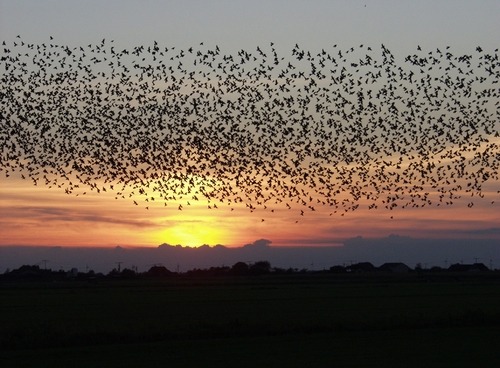| One of Liaoning's many incredible bird fossils |
Australia's geological record is perhaps the most diverse in the world, but its fossil record is less clear. Specimens of the earliest life forms can be found, but are scattered across the continent. While the best bird fossils are very recent. Giant moas and monstrous eagles lived in Australia until just a few hundred years ago, but their remains extend back tens of thousands of years.
 |
| The 105 million year old bird tracks |
The 105 million year old tracks lie on a small piece of sandstone which originally formed in a polar river valley. This would have been green and damp for the first few months and then covered in ice and snow for the rest of the year. Their age alone is incredible, showing that just 35 million years after birds first evolved, in what would become Germany, they had already spread far across the world.
The real question behind the tracks, however, is how did they make it to the other side of the globe? 'These tracks are evidence that we had sizeable, flying birds living alongside other kinds of dinosaurs on these polar, river floodplains, about 105 million years ago,' said Anthony Martin from Emory University in Atlanta. 'I immediately knew what it was - a flight landing track - because I've seen many similar tracks made by egrets and herons on the sandy beaches of Georgia. The ancient landing track from Australia 'has a beautiful skid mark from the back toe dragging in the sand, likely caused as the bird was flapping its wings and coming in for a soft landing.'
Other evidence, this time environmental, points towards the tracks being made by a flying bird. The trackway was originally made in a seasonal polar environment. At this time in Earth history creatures like the penguin had not evolved. As a result birds would not have had many special adaptations to cope with a cold climate.
 |
| Bird migrations take place on a truly massive, often intercontinental scale |
The tracks were made on the moist sand of a river bank, perhaps following a polar winter, after spring and summer flood waters had subsided. 'The biggest question for me,' continued Martin, 'is whether the birds that made these tracks lived at the site during the polar winter, or migrated there during the spring and summer.'
Bird migrations take place over vast distances. If the tracks were indeed made by an avian seeking warmer climates during part of the year then this demonstrates that birds must have mastered the art of flying quickly. 'The picture of early bird evolution in the Southern Hemisphere is mostly incomplete,' Martin concluded, 'but with these tracks, it just got a little better.'